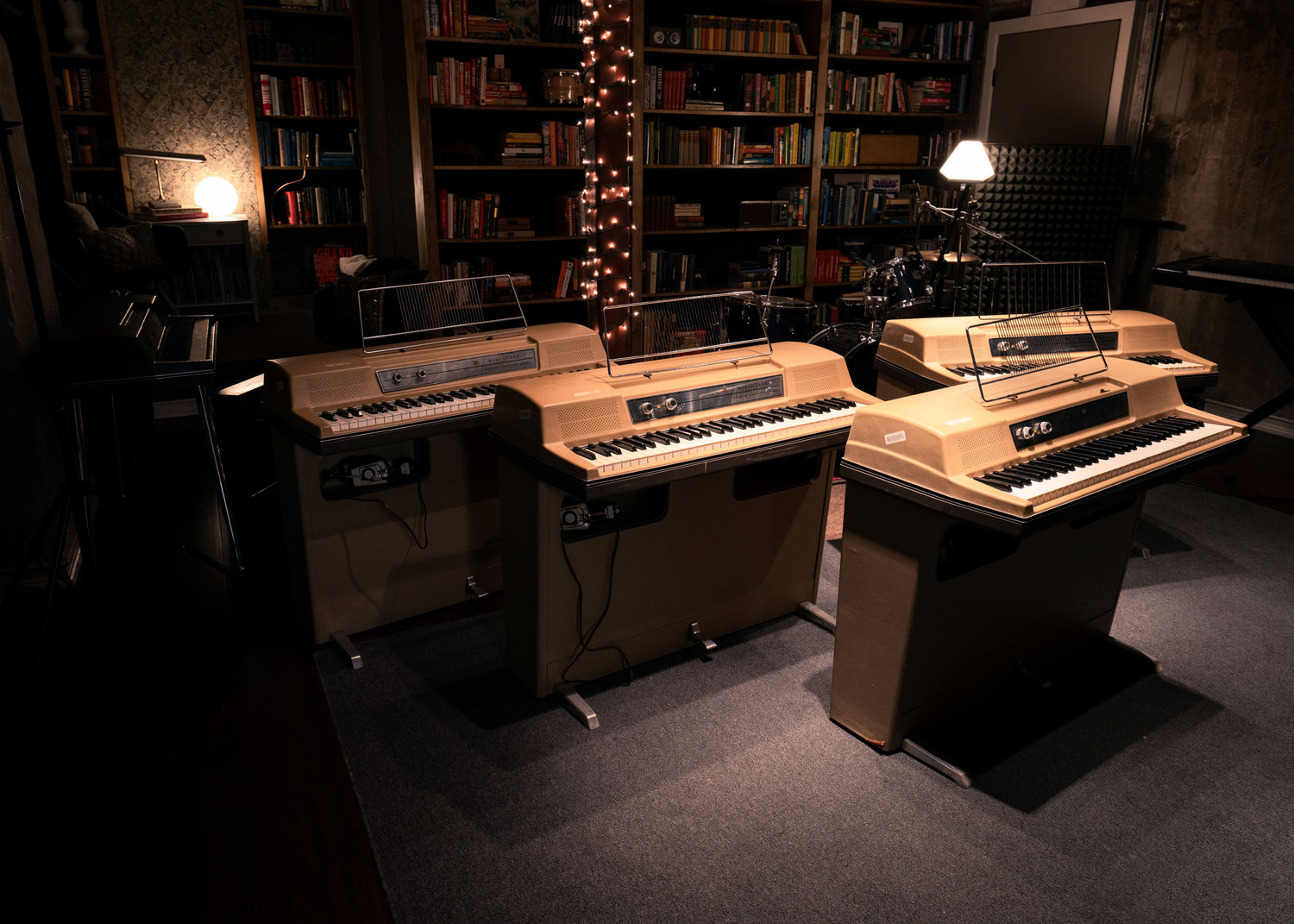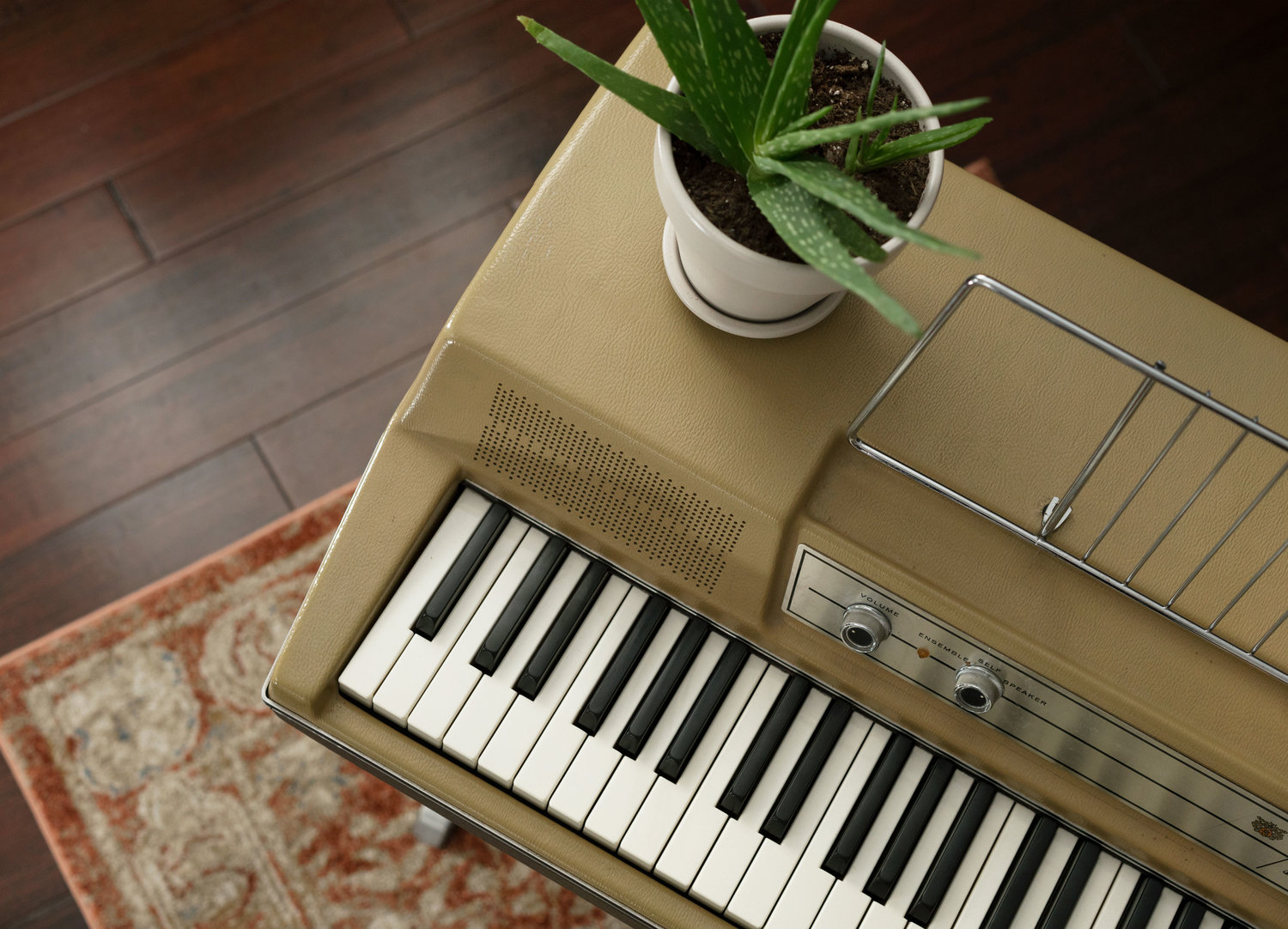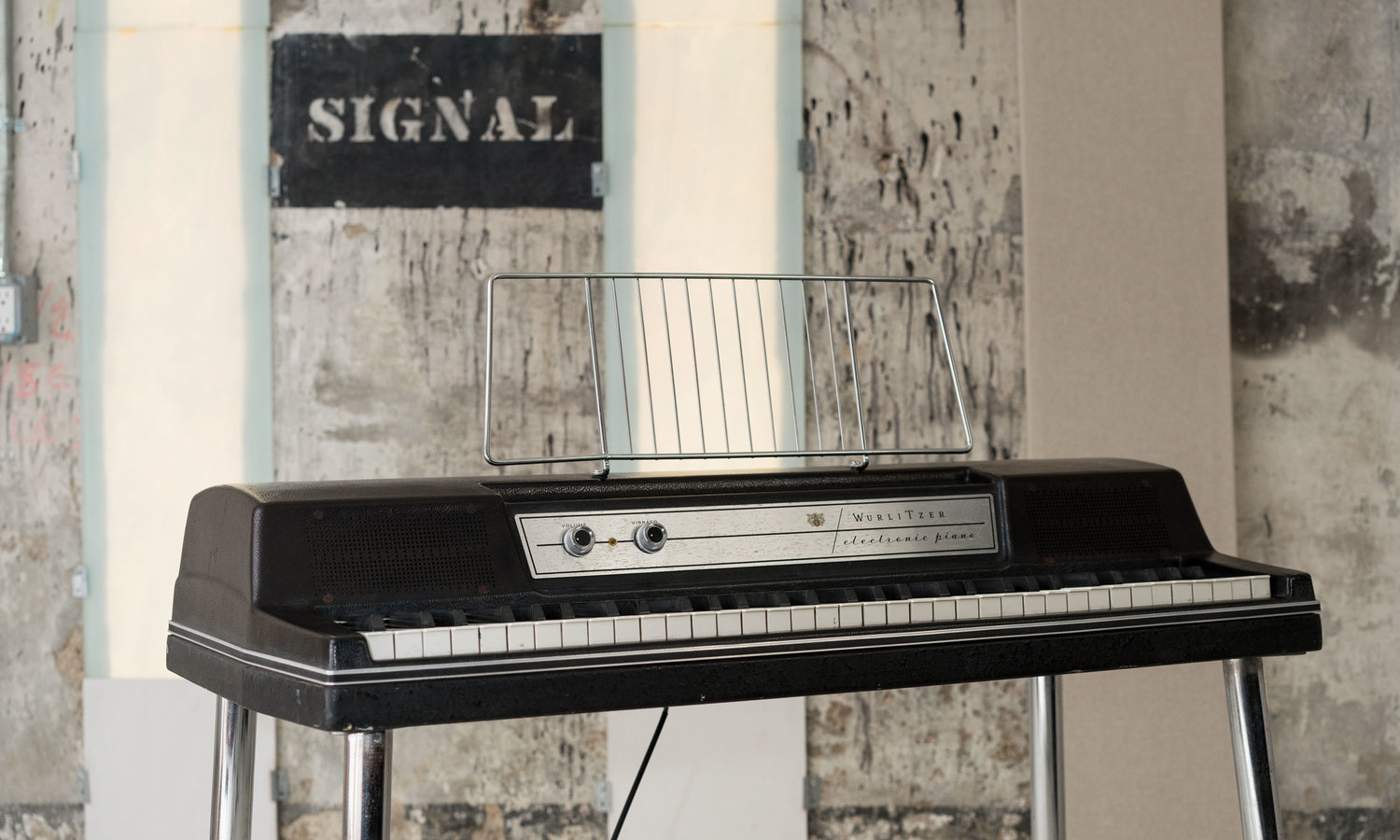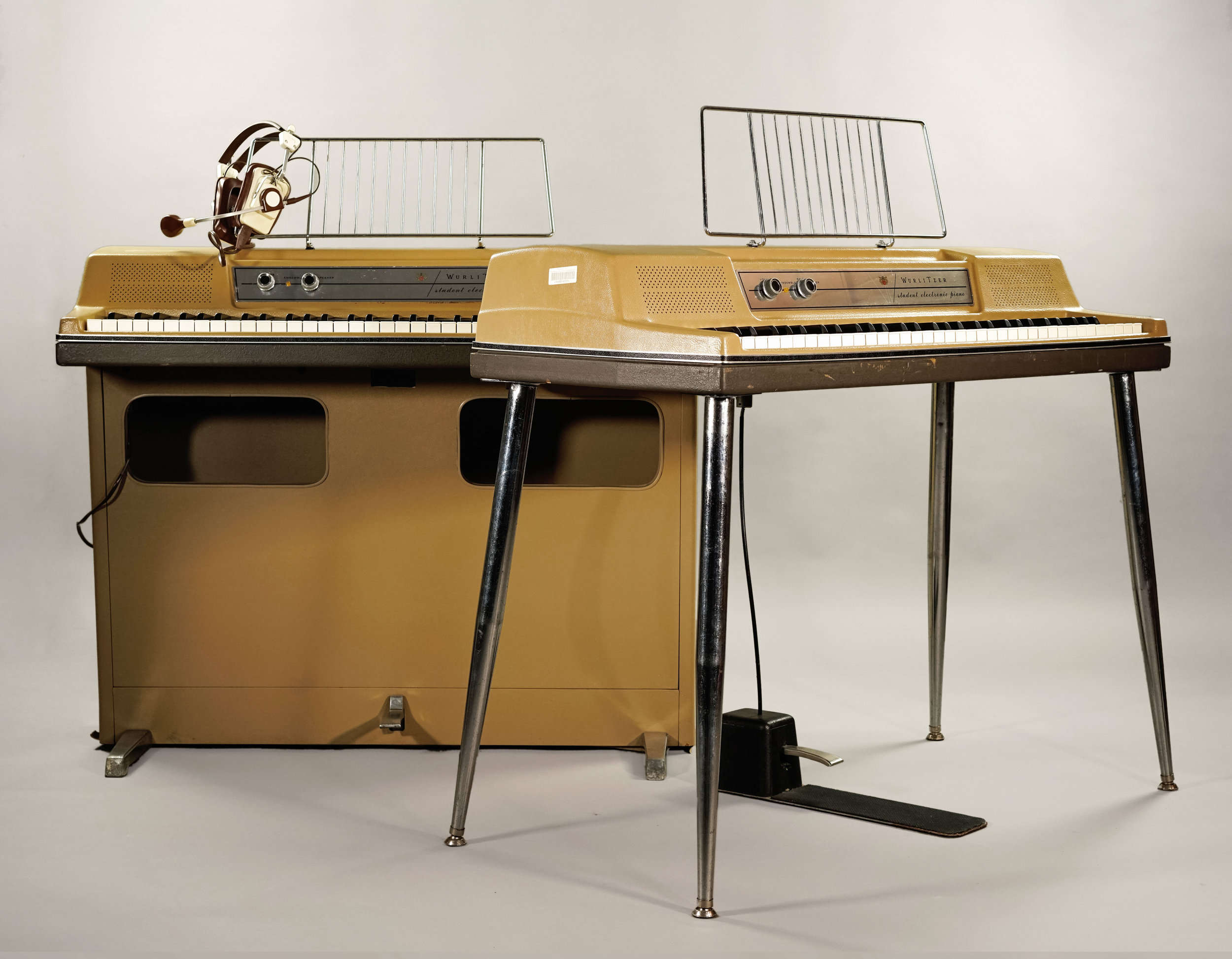Wurlitzer Quick Reference Chart: Things We Included, and Things that We Didn't
Not going to lie: it was hard to narrow down the many variations of a Wurlitzer to create our Wurlitzer Quick Reference chart. We decided to do a quick write-up of all the subtleties that the graphic glosses over. And - let’s be clear - everything about that chart is a subtlety. Every Wurlitzer has that iconic Wurlitzer sound, and any model is capable of being restored to a highly playable, musical state. Amps can be modded for aux outputs and vibrato. Noise can be minimized. Console models can be put on legs. Portable models can be attached to consoles. (We have so many 206 bases. Please help us.) The chart is mostly about where you want to start, and how much work you want to put into your Wurlitzer to make it an exceptional piece of gear in the age of digital recording.
Anyway, here’s a few notes on the chart about the things we included, and the things we left out.
Specs We Didn’t Include
In this chart, we tried to strike a balance. We wanted it to be a convenient resource without including an overwhelming amount of detail. There were two features that we considered including, but left out. We’ll discuss them here instead.
Shielding. A Wurlitzer’s pickup can be a source of noise. To counteract this, the amp requires a certain amount of shielding - generally, some piece of metal that is connected to chassis ground. Different models use different methods of shielding, but this shouldn’t really be a factor in your choice of Wurlitzer because they’re all more or less equivalent. If your Wurlitzer is noisy, the shielding is rarely to blame.
There is one exception. The Wurlitzer 200 was the first model with a plastic lid. This made the 200 lighter and more stylish (by 1970s standards, at least), but the metal lid in previous models wasn’t just for preventing the user from sticking their fingers in the tube sockets. It also provided some shielding. To compensate, the 200 implemented a sheet of aluminum, bent at a 45 degree angle, that was mounted above the dampers.
However, Wurlitzer continued to work on improving the noise floor. By the end of the 200’s manufacture, Wurlitzer added a second piece of shielding: a comb-shaped strip of metal mounted directly above the reed bar, underneath the dampers. For some Wurlitzers, this extra piece of shielding provides some improvement in the noise floor. The reed bar shield fits on any Wurlitzer with a 200-style action, which includes the 140a, 140b, and 720-series.
If you have a Wurlitzer 200 (or if you're thinking about buying one), you should check whether it has a reed bar shield. If not, you could consider adding one, but only if your amplifier is in decent shape. If your amp is noisy, the reed bar shield won't make as much difference as fixing your amp will.
If you have a 720-series or mid-to-late manufacture 140-series Wurlitzer (models which have 200-style reeds), the reed bar shield will also fit. However, the reed bar shield rarely has a significant effect on noise in these keyboards, because metal lid provides pretty good shielding as-is. However, if the keyboard is missing the layer of electrostatic paint that connects the lid to ground, the reed bar shield might be helpful as an alternative shield to the lid.
Because a properly shielded Wurlitzer is a convenience, we considered adding this feature to the chart. Ultimately, we did not, because it is simple (and often unnecessary) to install a new reproduction reed bar shield on a 200-style Wurlitzer that doesn’t already have one.
Reeds. The reeds changed several times throughout the Wurlitzer’s run, but we did not include them in the chart because updates to the reeds generally happened at the same time as updates to the mechanical action. There are three main types of reeds: 112-style reeds, 120-style reeds, and 200-style reeds. They are not interchangeable because reeds of a different style will not physically fit in the pickup.
Because the reeds are so intimately connected with the overall design of the keyboard, it is difficult to make a claim as to which reeds sound best. Other than availability (it is harder to acquire 112- and 120-style reeds than 200-style reeds), all reeds are equally functional and they all sound good.
There is one thing to watch out for: Wurlitzer 140 and 140a reed screws are prone to cracking. This structural flaw makes the reeds difficult to keep in tune. Note that this issue is in the reed screws, not the reeds themselves. Replacing the reed screws with 200-style reed screws solves the problem entirely.
Further Notes
Dates manufactured. Dates are based on the research of Steve Espinola.
Variations. Wurlitzer released new models of electronic piano regularly as they improved upon the reliability of its design (and probably its cost to manufacture). In addition, consumer electronics evolved rapidly in the 1960s, so frequent revisions to the amplifier were necessary to keep up with the marketplace. As a consequence, Wurlitzer released a new model of keyboard just about every year between 1955 and 1978. Some of these models were drastic revisions of the previous keyboard. Other models represented only minor changes.
We wanted this chart to be a quick reference that highlights the most important features of common Wurlitzer keyboards. For that reason, we opted to list only the Wurlitzer models we feel are the most significant. Where changes between models were minor, we listed it only as a “variation.” So, the 140a is listed as a variation of the 140 because the two keyboards are extremely similar both electronically and mechanically. However, the 140b has its own entry because it is such an all-around improvement on the 140 and the 140a, not to mention its historical importance as the first Wurlitzer with a mechanical action that is basically equivalent to the iconic 200-series. We admit that the distinction is subjective, but we feel that it keeps the size of the chart under control without compromising detail.
Amplifier. Wurlitzer amps are successive: each new amp replaced the one before it. The exception is the 140 and the 145, which were released at the same time in order to give consumers both a tube and a solid state option.
Amps are designed as “germanium” or “silicon” based on the makeup of the power transistors. The 140b’s solid state amplifier used silicon preamp transistors and is relatively modern for its time, particularly compared to the amp in the 140 and 140a. However, we listed it as “germanium” because the power transistors are still germanium, which has serious implications for repairing the amplifier. Germanium transistors are no longer manufactured, and vintage originals hard to source. Even if they are NOS their values have often drifted to an unusable extent. Replacing a germanium transistor with a new silicon transistor requires rebidding the circuit.
Thanks to the complications of germanium components, we prefer to replace non-functioning 140 amps with reproduction 145 tube amps. Because the 140- and 145-series keyboards are otherwise the same, this is a non-invasive, period-correct mod. Plus, you can keep your germanium solid state amp original just in case the future holds a germanium transistor revival (who knows?).
Vibrato. The earliest Wurlitzers did not have vibrato. (We think their unique early reeds and tube warmth compensates. However, the 112 is a great candidate to modify for an fx loop.) Vibrato was introduced in 1962, for the Wurlitzer 140 and 145. All future models had vibrato as well, except for the student versions, which gave up their vibrato controls for a self/ensemble switch that toggled the keyboard’s output between speakers and headphones. However, early student models prior to the 206a had vibrato circuitry installed. Where vibrato was present but not hooked up, we have marked it as “disabled.” In contrast, the 206a has no vibrato circuitry. However, because the 206a has the same circuit board as the 200a, it can be populated with vibrato components according to the schematic. To reflect this, we have marked the 206a as “requires modification.”
Outputs. Although an aux out seems like a basic feature today, recording practices in the 1950s and 1960s were pretty primitive. Just think about the gear that an aux out could have even connected to back then, and it’s unsurprising that an aux wasn’t standard until the 200 was released in 1968. Plus, Wurlitzer was preoccupied with selling electronic pianos to schools. Since they omitted the aux in the 206 and 206a student models, it’s safe to say that Wurlitzer didn’t think that it was a feature that students needed.
On the plus side, any model that doesn’t have an aux out does have an external speaker jack. This is worth using: the speaker on early Wurlitzers is very small and inconveniently located at the back of the keyboard. Plugging a Wurlitzer a large speaker cabinet provides more bass response, and you can of course point it wherever you want. You can even
Some Wurlitzers can be modded to add the aux out. A true aux taps signal from somewhere in the preamp, and uses active circuity (such a tube triode or transistor circuit) to ensure a proper low-impedance output. (That’s why it is inadvisable to use an external speaker output - which is literally just an extra speaker jack - as an aux.)
For this reason, it is challenging to find enough real estate inside the amp to add an aux to most models of tube Wurlitzer. An exception is the 112, which technically already has an aux - it just has to be modified in order to be usable, because the original jack is obsolete and the circuit topology benefits from a bit of rearranging. Notably, adding an aux to 206 and 206a model Wurlitzers is barely a mod: they use the same amplifier as a 200/200a, which is designed with an aux out.
The 146 and 726 are listed as having just an external speaker jack - no headphones. Although these models technically have headphones, they are permanently hardwired to the case of the keyboard. So, there’s no output jack.
Action. Any action that is marked “transitional” features elements of the earlier and later design, based on the date of manufacture of the particular keyboard in question. For instance, early 140 and 140a Wurlitzers are more similar to the Wurlitzer 120. However, the latest 140a Wurlitzers will have 200-style reeds. This is convenient because 200-style reeds are easier to source. On the other hand, early 140a Wurlitzers with 120 reeds are extremely rare, and the different reeds have their own very unique tone. Style of reeds is, in our opinion, never a downside.
Depending on their year of manufacture, 140-series Wurlitzers after the 140a have a mechanical action that is more similar - in varying degrees - to a Wurlitzer 200. They will accept 200-style reeds and a 200a reed bar shield. However, they may have differences in other aspects of their mechanical design, most notably in the length of their dampers.
Compared to earlier Wurlitzers, 140-series keyboards are easy to service. They’re highly playable and have a unique look and feel. Their similarity to 200-series Wurlitzers is mostly relevant with regard to how obtainable replacement parts are. Because most Wurlitzers used 200-series parts, they are the most common.
If reliability is a concern, the best thing to do with any model is to actively collect a few replacement parts to have on hand before you need them. Even parts that are currently being manufactured sometimes sell out, so having a couple of reeds or other parts on hand will ensure that your Wurlitzer never suffers from an extended downtime.
Base. Any console 200 can be converted to legs, or vice versa. 200-series console Wurlitzers are identical to the portable version, other than the fact that they are screwed onto a base. By unscrewing the base and adding legs and a three-prong cord, any console model becomes portable.
It is fine to convert student model Wurlitzers into portable 200/200a Wurlitzers. These were made in large quantities and sold to schools six at a time, so there is no shortage of student keyboards. However, we recommend not converting non-student console Wurlitzers. These models - the 214, the 203, and the 210 - are very rare. They also have the best speaker complement: two 8” speakers in the front, and two in the back. (Student Wurlitzers only had two 8” speakers in the front.) This provides a rich tone with plenty of bass, and is the best way to experience a Wurlitzer short of plugging it into something external.
If you have a 203, 210, or 214 and would prefer the portability of a 200 or 200a, contact us. We may be able to work out a trade.
Weight. Weights are approximate and include legs and lid (if applicable). Note that not all console models are equally inconvenient to transport. All 700 Wurlitzers, as well as 206a and later 206 models, have small handholds in the back. The 203w and 214 are on wheels.
Student models. Student models end in a 6. Instructor models ended in a 7. All instructor models are the same as the student models, except that they had additional controls that could enable or disable the outputs of the student pianos.
All Wurlitzers, from the 112 onward, could be purchased in a set for classroom use. However, classroom-specific Wurlitzers were not manufactured until the mid-1960s, when the 146 and 726 were released. Instead, prior models were sold with a module that the instructor could mount on top of his or her keyboard.
The amplifiers of classroom Wurlitzers lack some features of their non-student counterparts. However, because the student and non-student versions used the same amp, it is very easy to enable any features that are disabled in a student model.
Further Reading
Browse all of our articles on restoring vintage gear. Or, click on an image below.




